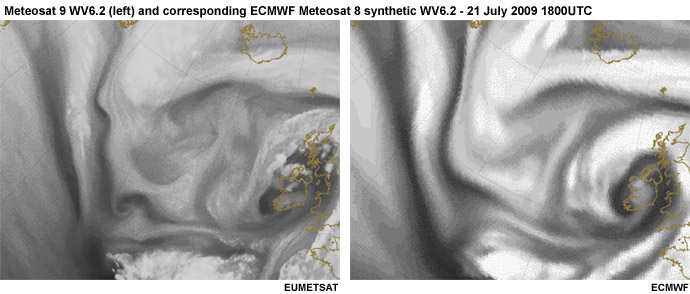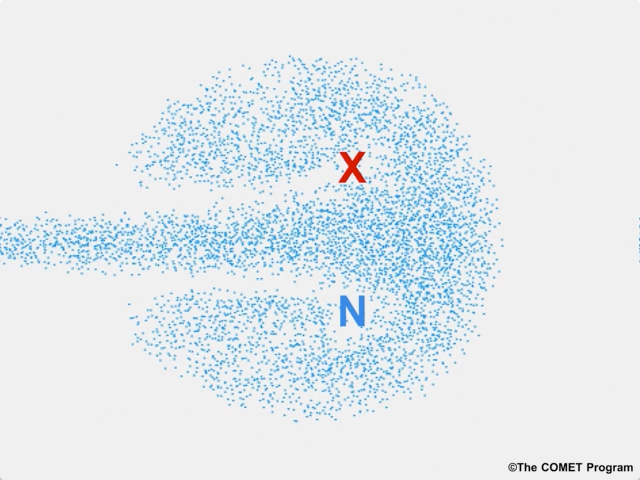Introduction
Vorticity and deformation patterns are present throughout the atmosphere, though they may not always easily identified on constant pressure-level maps. Satellite imagery is a natural tool to view vorticity centers and deformation simultaneously, and it provides rich detail to help visualize weather processes. Research by Pliske et al., Hahn et al. and Stuart et al. all point out that the most highly-skilled forecasters possess superior visualization skills and use complex mental models of the atmosphere in their forecasting processes.
Moreover, satellite imagery can reveal small-scale vorticity and deformation patterns that are sometimes undetected or smoothed out by numerical models. See the satellite water vapor image on left compared to synthetic water vapor from ECMWF on the right below. There are a few small vorticity maxima that are not analyzed well by the model. It may seem like a small difference, but it can have big impacts in forecast quality.

Here you will get a chance to become better acquainted with identifying vorticity minima, maxima and areas of deformation using satellite water vapor imagery. Knowledge gained from these lab analyses will be combined with other kinematics lab activities to develop a more complete picture of weather processes. Eventually you can even use these same concepts to assess the quality of nwp initializations.
Be sure to consult your instructor for details on which parts of the pre-lab and lab analyses are required or recommended before you begin.
